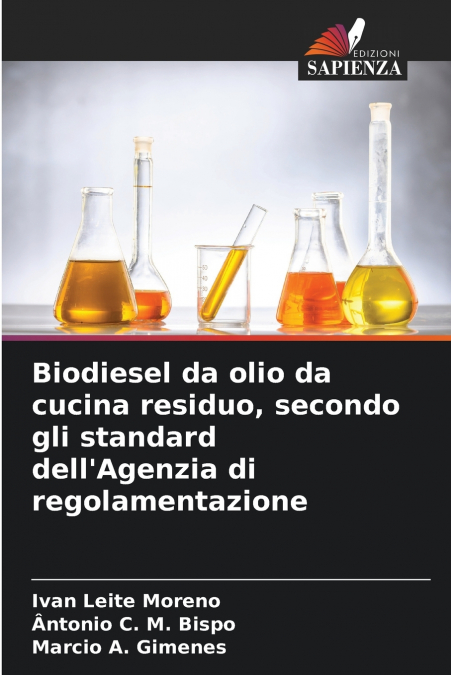
Ântonio C. M. Bispo / Ivan Leite Moreno / Marcio A. Gimenes
 Donde los libros
Donde los libros
 Librería 7artes
Librería 7artes
 Librería Elías (Asturias)
Librería Elías (Asturias)
 Librería Kolima (Madrid)
Librería Kolima (Madrid)
 Librería Proteo (Málaga)
Librería Proteo (Málaga)
Con il riutilizzo dell’olio di frittura residuo nella catena di produzione del biodiesel, è necessario migliorare sempre più gli studi sul miglioramento della qualità di questo rifiuto. I principali componenti chimici dell’olio vegetale e dei grassi animali sono esteri di acidi grassi con glicerolo. L’acido grasso è un acido carbossilico (COOH) con una catena alifatica. Sono considerati componenti organici, ovvero contengono carbonio e idrogeno nelle loro molecole. Questi acidi vengono prodotti quando i grassi vengono scomposti. Sono scarsamente solubili in acqua (più lunga è la catena di carbonio, minore è la solubilità) e possono essere utilizzati come energia dalle cellule. Sono classificati come monoinsaturi, polinsaturi o saturi. Per aumentare la qualità di questo residuo, si stanno conducendo studi di caratterizzazione fisico-chimica, alla ricerca di una migliore qualità del suo utilizzo. Viene citato il processo di transesterificazione ed esterificazione.